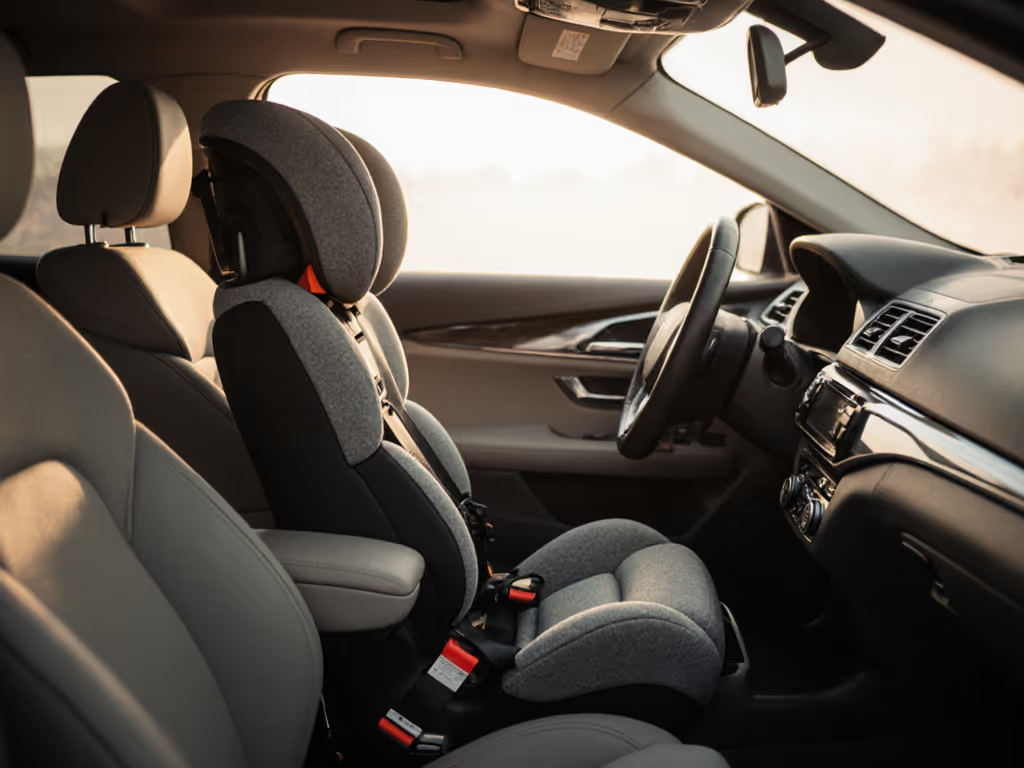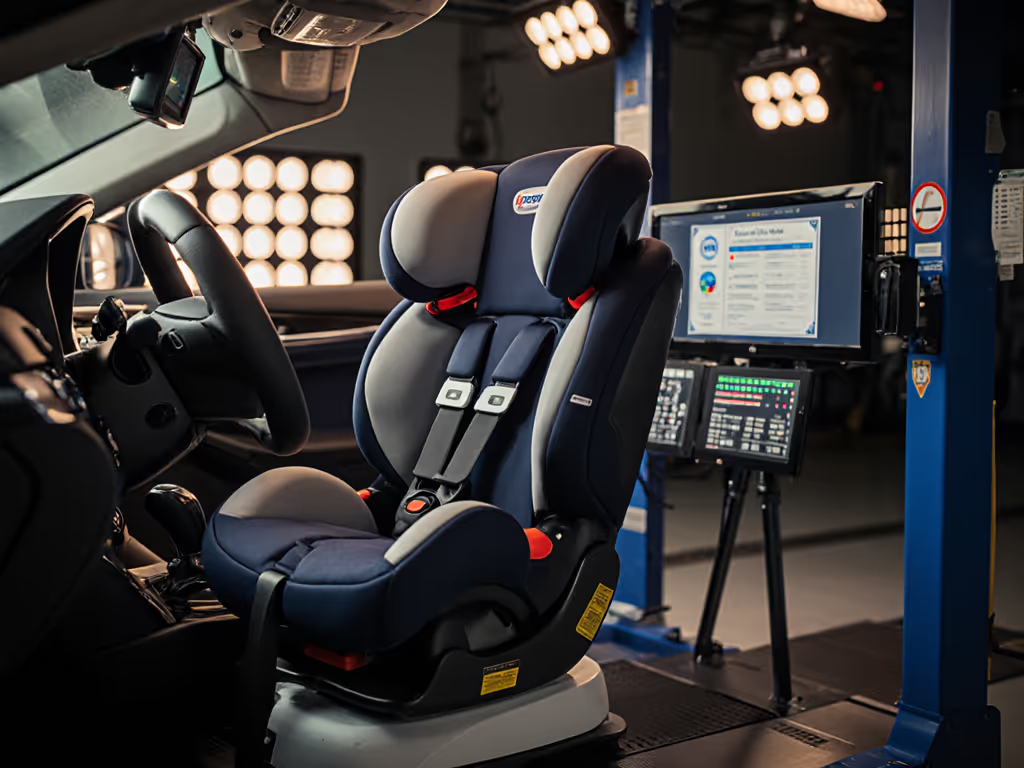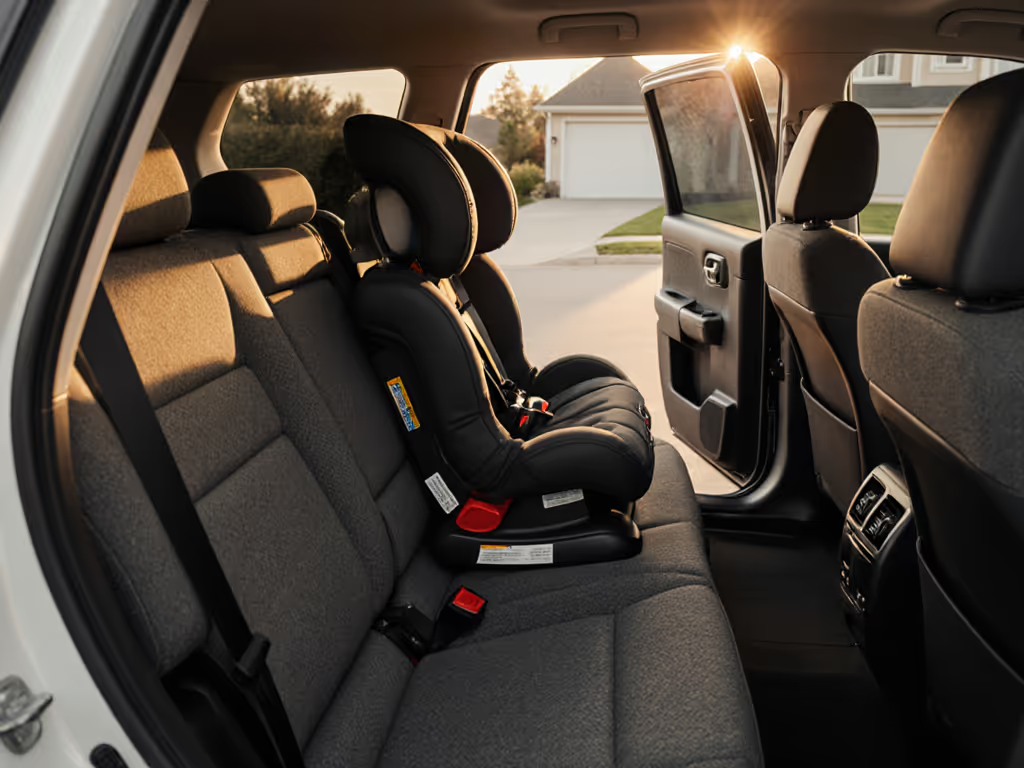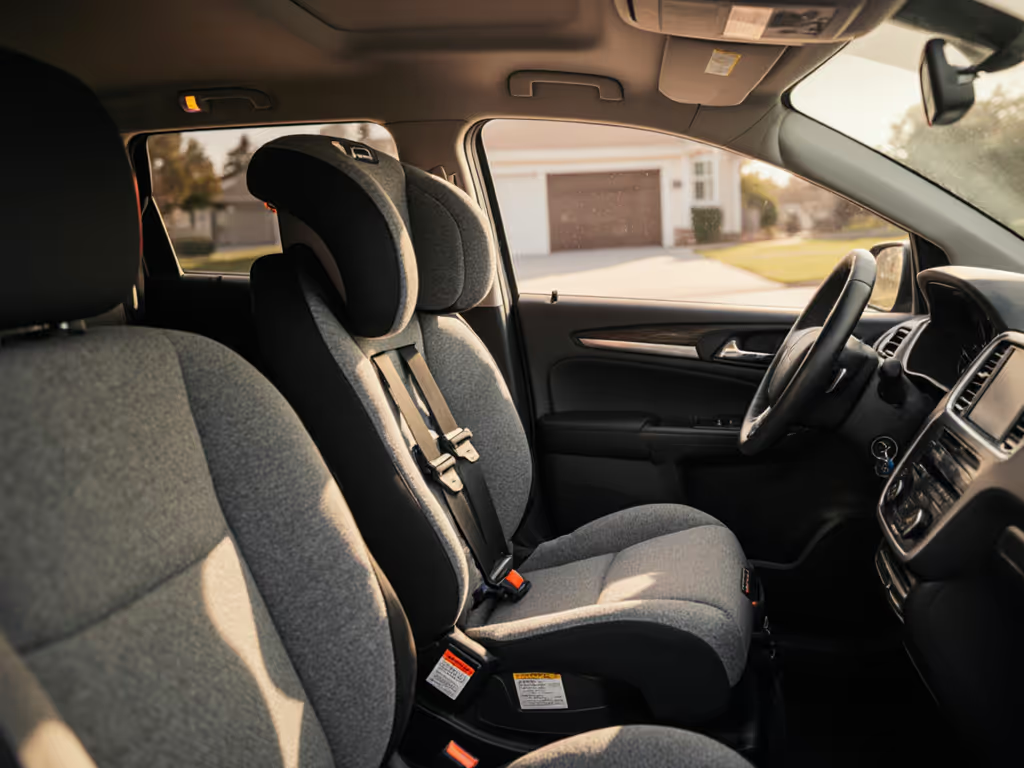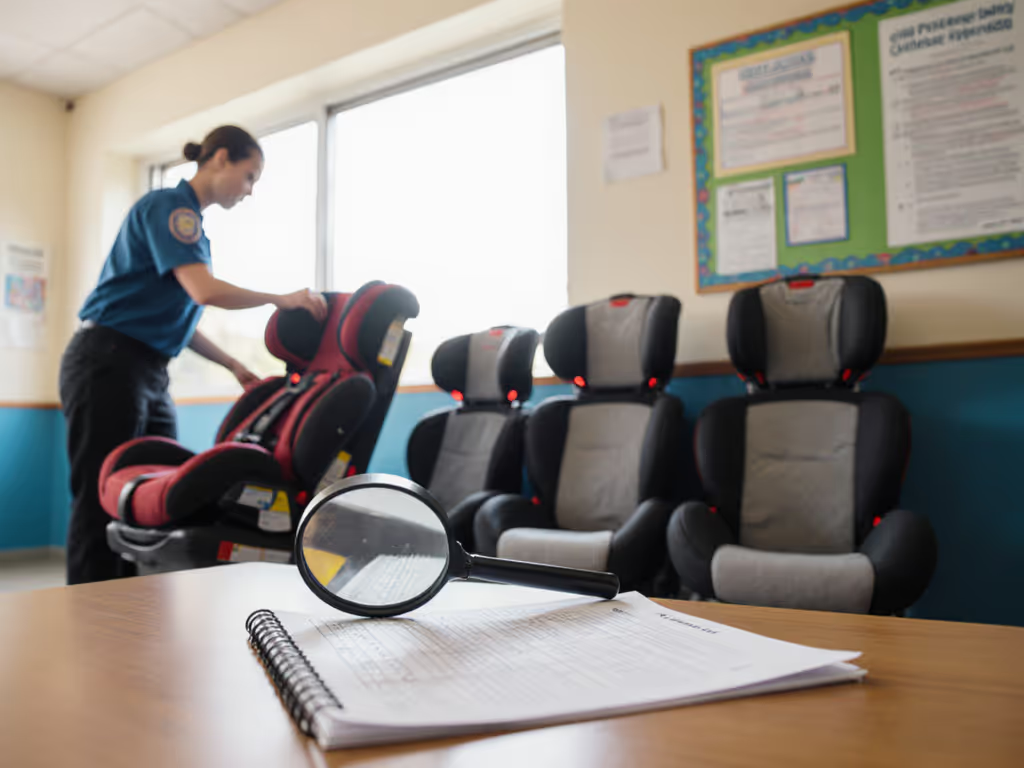
Car Seat Fit: Everything You Need to Know
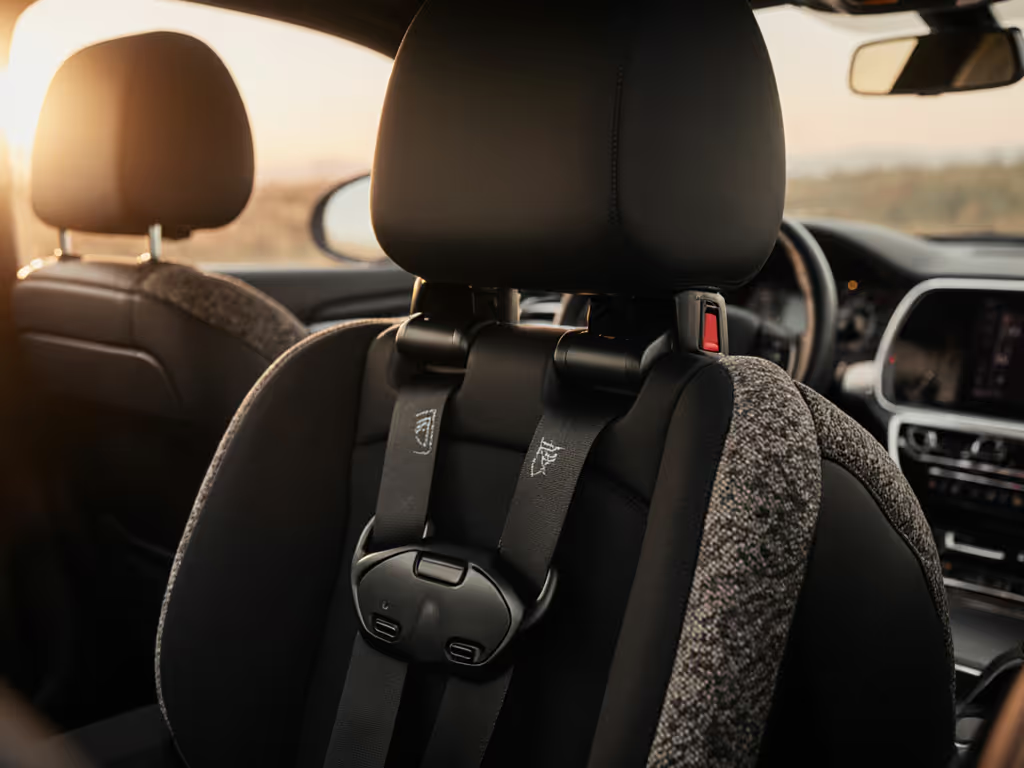
Did you know that nearly 60% of car seats are installed incorrectly, putting thousands of children at risk every year? For parents and caregivers, getting the right car seat fit is more than a checklist item. It is the difference between effective protection and serious danger in a crash. Understanding the details of car seat fit helps you avoid hidden mistakes and ensures your child travels safely on every ride.
Key Takeaways
| Point | Details |
|---|---|
| Importance of Car Seat Fit | Proper car seat fit is essential for child safety, ensuring secure positioning and protection during travel. |
| Types of Car Seats | Understanding the different car seat types and their fit characteristics is crucial for ensuring appropriate safety for children at various developmental stages. |
| Consequences of Poor Fit | An improperly fitted car seat significantly increases the risk of injury or fatality during vehicle collisions, highlighting the need for meticulous installation. |
| Avoiding Common Mistakes | Frequent mistakes include incorrect installation and mismatched sizes, underscoring the importance of continuous education and adherence to safety guidelines. |
Defining Car Seat Fit and Its Importance
When it comes to child passenger safety, car seat fit isn't just a recommendation - it's a critical protective strategy that can mean the difference between life and potential tragedy. Proper car seat fit ensures that your child is securely positioned and protected during every journey, whether it's a quick trip to the grocery store or a long family road trip.
At its core, car seat fit involves multiple interconnected factors: the physical compatibility between the car seat and your specific vehicle, the alignment of the seat with your child's current height and weight, and the precise installation technique that minimizes movement and maximizes protection. Vehicle compatibility means ensuring the car seat can be correctly anchored using either seatbelts or the standardized Isofix attachment points, which international safety standards have developed to reduce installation errors.
The consequences of an improper car seat fit can be severe. Research indicates that incorrectly installed or ill-fitting car seats significantly reduce their protective capabilities during vehicle collisions. Key fit considerations include:
- Minimal side-to-side movement when the seat is installed
- Proper harness positioning relative to the child's shoulder height
- Correct recline angle based on the child's age and developmental stage
- Secure attachment using vehicle-specific mounting points
Ultimately, understanding and achieving the right car seat fit requires patience, attention to detail, and a commitment to your child's safety. It's not just about purchasing an expensive seat - it's about knowing how to use it correctly every single time you travel.
Types of Car Seats and Fit Differences
Navigating the world of car seats can feel like solving a complex puzzle, with each age and size requiring a unique safety solution. Child safety seats are strategically categorized to match a child's developmental stages, ensuring optimal protection and comfort as they grow from infancy through early childhood.
The primary car seat types include infant seats, convertible seats, and all-in-one seats, each designed with distinct fit characteristics. Infant seats are the smallest, typically rear-facing and suitable for babies weighing up to 22-35 pounds. These compact seats prioritize snug, secure positioning for the most vulnerable passengers. Convertible seats offer more flexibility, functioning in both rear-facing and forward-facing configurations, accommodating children from infancy through toddlerhood.
Key differences among car seat types impact their fit and functionality:
Here's a comparison of the main car seat types and their fit characteristics:
| Car Seat Type | Child Age/Weight Range | Seat Orientation | Main Fit Features |
|---|---|---|---|
| Infant Seat | Birth–12/18 months<br>4–35 lbs | Rear-facing only | Snug fit for newborns<br>Portable design |
| Convertible Seat | Birth–4+ years<br>4–65 lbs | Rear or forward-facing | Adjustable recline<br>Multiple harness positions |
| All-in-One Seat | Birth–7+ years<br>4–100 lbs | Rear, forward, booster | Converts to booster<br>Broad weight range |
| Booster Seat | 4–12 years<br>40–100+ lbs | Forward-facing only | Lifts child for seatbelt use<br>No harness |
- Infant Seats: Smallest size, designed for newborns to approximately 12-18 months
- Convertible Seats: Adaptable design that transitions between rear and forward-facing positions
- All-in-One Seats: Most comprehensive option, transforming from rear-facing to forward-facing to booster seat
- Booster Seats: Used for older children who have outgrown traditional car seats
Choosing the right car seat isn't just about age or weight - it's about understanding your specific vehicle's configuration, your child's physical development, and the nuanced safety requirements for each growth stage. Each transition represents a critical moment in child passenger safety, demanding careful consideration and precise fit assessment.
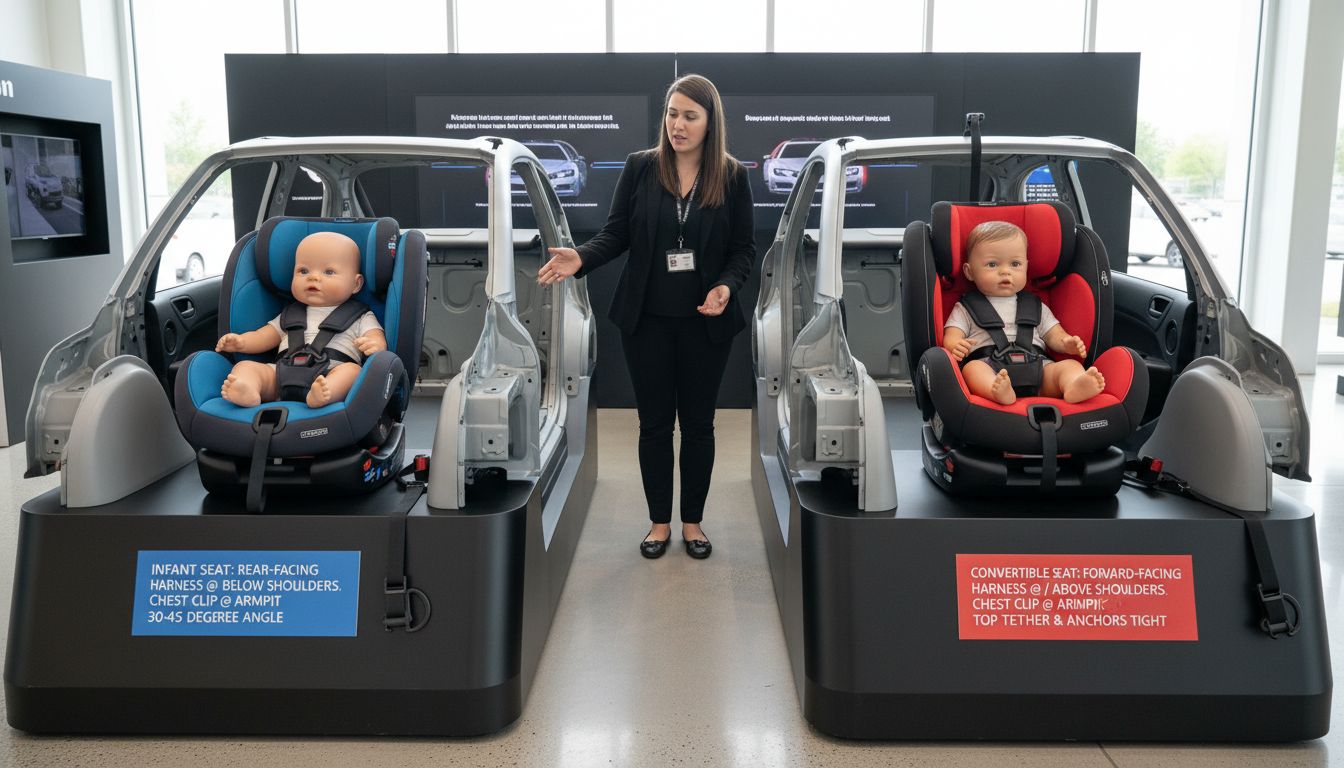
Fit Principles: Age, Size, and Vehicle Factors
Car seat fit is a complex interplay of three critical factors: the child's age, physical size, and the specific characteristics of the vehicle. Understanding these interconnected elements is essential for selecting and installing a car seat that provides maximum safety and protection.
Age and size are the primary determinants of car seat selection. Children progress through distinct developmental stages, each requiring a uniquely configured safety solution. Weight ranges typically guide seat transitions, with manufacturers providing precise specifications for rear-facing, forward-facing, and booster seat usage. For instance, an infant seat might accommodate children from 4 to 35 pounds, while a convertible seat extends protection across a broader weight spectrum.
Vehicle compatibility introduces another crucial dimension to car seat fit. Modern vehicles offer various attachment systems, with Isofix emerging as a standardized international method for secure seat installation. Key vehicle considerations include:
- Seat belt configuration and anchor point locations
- Vehicle seat width and contouring
- Presence of lower anchors and tether systems
- Compatibility with different car seat mounting mechanisms
Ultimately, achieving a perfect car seat fit requires more than simply matching age and weight. It demands careful measurement, understanding of your specific vehicle's design, and a willingness to test and adjust. Each child and vehicle represents a unique combination, making personalized assessment not just recommended, but absolutely essential for ensuring optimal child passenger safety.
Consequences of Poor Car Seat Fit
A poorly fitted car seat isn't just an inconvenience - it's a potentially life-threatening mistake that can transform a routine drive into a devastating tragedy. Improper car seat installation dramatically reduces a child's protection during a collision, turning what should be a safety device into a dangerous liability.
The risks of an ill-fitting car seat extend far beyond simple discomfort. During a crash, an improperly secured seat can separate from its mounting, causing the child to be violently thrown, resulting in severe injuries or fatal consequences. Mechanical failure becomes a critical concern when seats aren't correctly anchored, with even minor movement potentially compromising the entire protective structure. Research consistently demonstrates that incorrectly installed car seats can reduce protective effectiveness by up to 70%, leaving children exposed to catastrophic injury risks.
Specific consequences of poor car seat fit include:
- Increased risk of ejection during sudden stops or collisions
- Ineffective harness protection that fails to restrain the child
- Potential head and neck injuries due to improper positioning
- Compromised impact absorption capabilities
- Higher likelihood of seat separation from vehicle mounting points
Beyond the immediate physical dangers, poor car seat fit represents a profound failure of parental responsibility. Every misaligned strap, every loose connection, every ignored installation guideline potentially puts a child's life at unacceptable risk. The margin between safety and tragedy is often measured in mere inches - a stark reminder that when it comes to child passenger protection, precision isn't optional.
Avoiding Common Car Seat Fit Mistakes
Parents and caregivers often unknowingly make critical car seat fit mistakes that compromise their child's safety. These errors aren't just minor oversights - they're potential life-threatening missteps that can transform a protective device into a dangerous liability during unexpected vehicle incidents.
Installation errors represent the most frequent and dangerous mistakes. Many caregivers assume that simply attaching a car seat means it's secure, but proper fitting demands meticulous attention. This includes ensuring the seat doesn't move more than one inch in any direction, positioning harness straps at the correct height, and understanding the specific mounting requirements for different vehicle types. The Isofix system provides standardized attachment points, but even these require precise engagement to guarantee maximum protection.
Critical mistakes to avoid include:
- Using a car seat that doesn't match the child's current weight and height
- Failing to adjust harness straps as the child grows
- Incorrect seat recline angle for the child's age
- Overlooking vehicle-specific installation guidelines
- Positioning the seat in an inappropriate location within the vehicle
- Wearing bulky clothing that interferes with harness fit
- Not reading the entire manufacturer's installation manual
Ultimately, preventing car seat fit mistakes requires ongoing education, patience, and a commitment to continuous learning. Each child grows differently, each vehicle has unique characteristics, and safety standards evolve. What worked perfectly six months ago might need adjustment today. Regular checks, professional inspections, and staying informed about the latest safety recommendations are not optional - they're essential for protecting the most precious passengers in your vehicle.
Ensure the Perfect Car Seat Fit for Your Child's Safety
Understanding the critical importance of car seat fit means recognizing how every small detail can affect your child’s protection on the road. If you have struggled with confusing installation instructions or worry about choosing a seat that truly fits your child’s age, weight, and vehicle, you are not alone. The risks of poor fit—from improper harness heights to incompatible seat attachments—can be overwhelming but must be addressed with care and precision.
At Fits for Years Seats, we specialize in guiding parents and caregivers through these exact challenges. Our expert resources focus on finding the right convertible car seats tailored to your child’s growth stages and your vehicle’s unique features. Discover practical tips on installation, understand safety compliance like FMVSS 213, and compare top products for ease of use and comfort. Don’t leave your child’s safety to chance—begin your journey toward confident car seat selection and fit today by visiting Fits for Years Seats. Your child’s protection deserves nothing less.
Frequently Asked Questions
What is car seat fit and why is it important?
Car seat fit refers to how well a car seat accommodates a child's size and how securely it is installed in a vehicle. Proper fit is critical for ensuring your child's safety during travel, as it minimizes the risk of injury in the event of an accident.
How do I ensure the correct installation of a car seat?
To ensure correct installation, follow the manufacturer's guidelines and check that the seat does not move more than one inch in any direction. Make sure the harness straps are positioned at the correct height for your child's shoulders and that the seat is securely anchored using either seat belts or the Isofix system.
What are the different types of car seats and their fit characteristics?
The main types of car seats include infant seats (for newborns to 12-18 months), convertible seats (which can face rear or forward and accommodate children up to 65 lbs), all-in-one seats (which transform from rear-facing to booster), and booster seats (for older children usually weighing over 40 lbs). Each type has unique fit characteristics based on age and weight.
What common mistakes should I avoid when fitting a car seat?
Common mistakes include using a car seat that is not appropriate for your child's current weight and height, neglecting to adjust harness straps as your child grows, and not positioning the seat correctly within the vehicle. It is also important to ensure that bulky clothing does not interfere with the harness fit.

